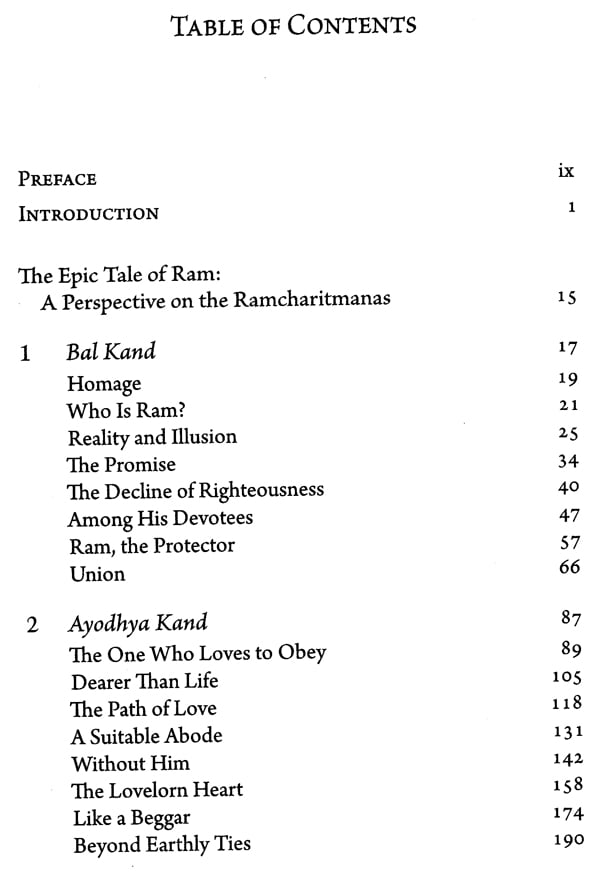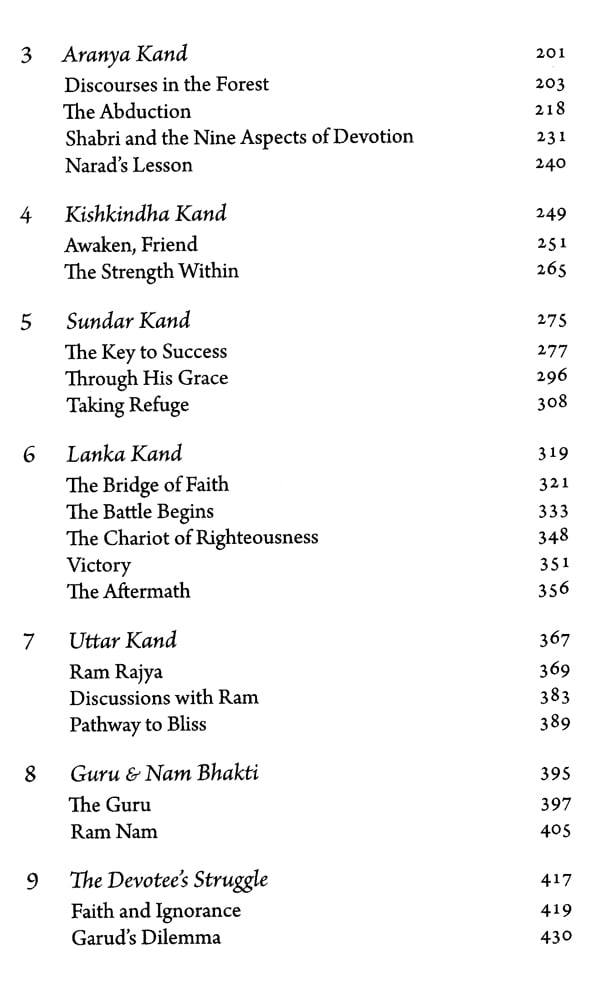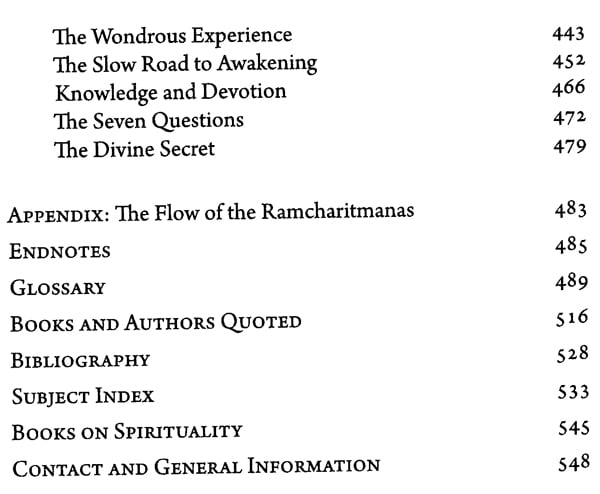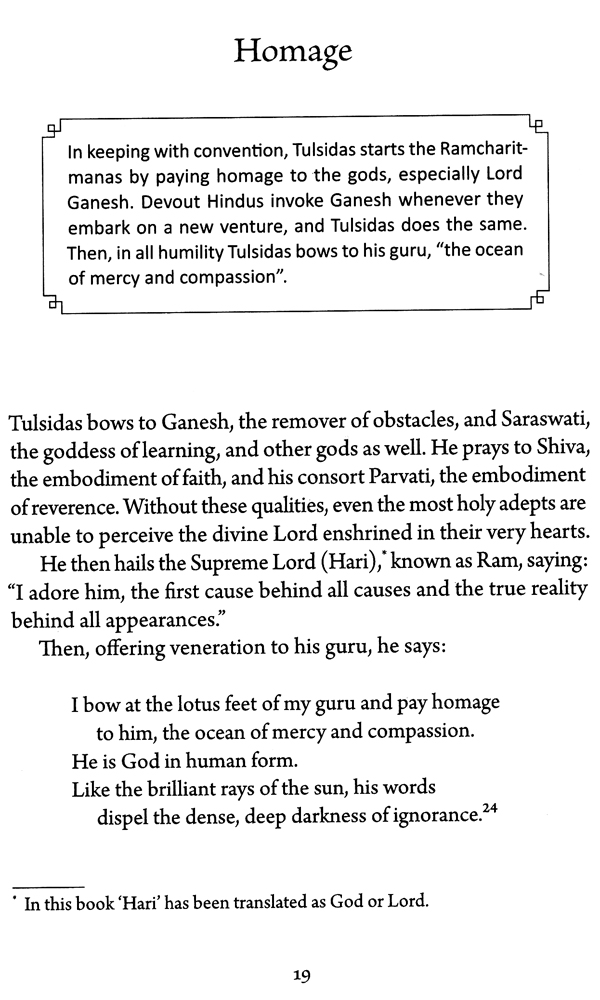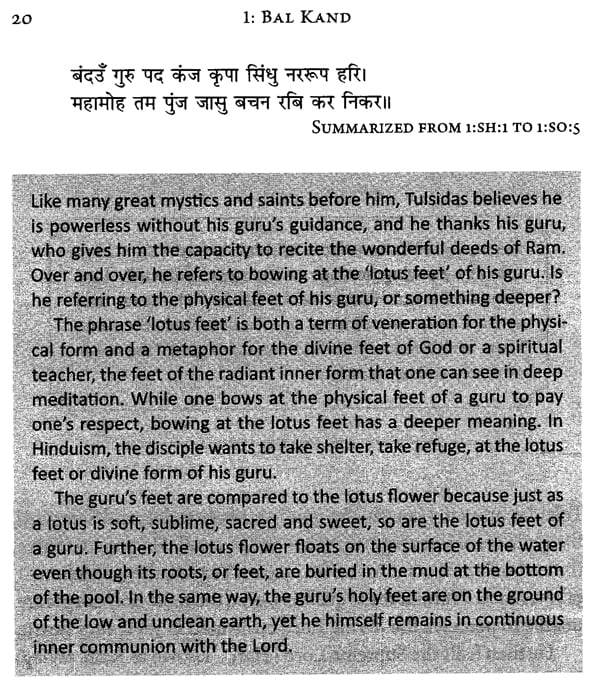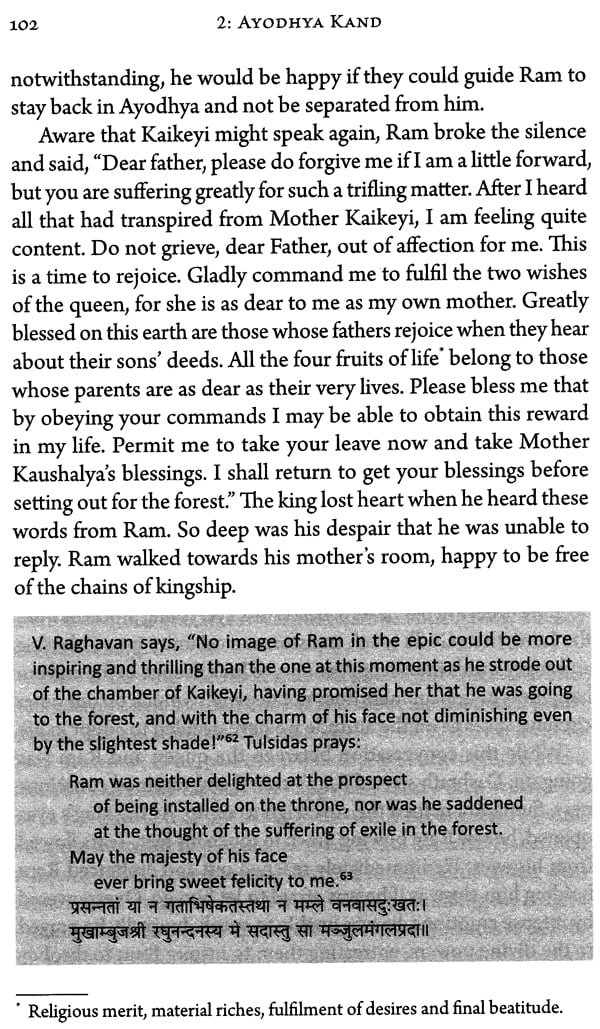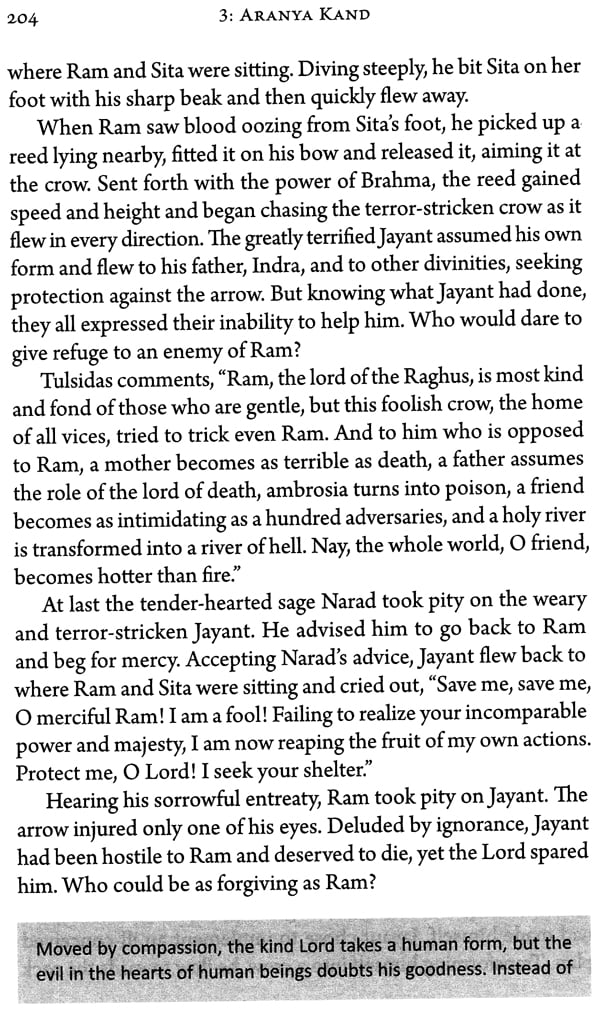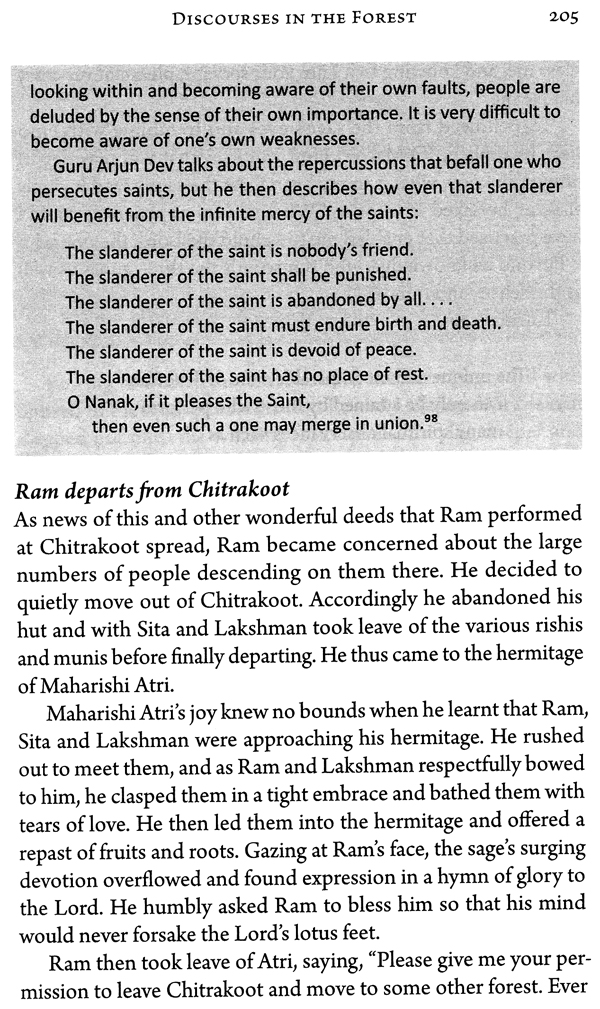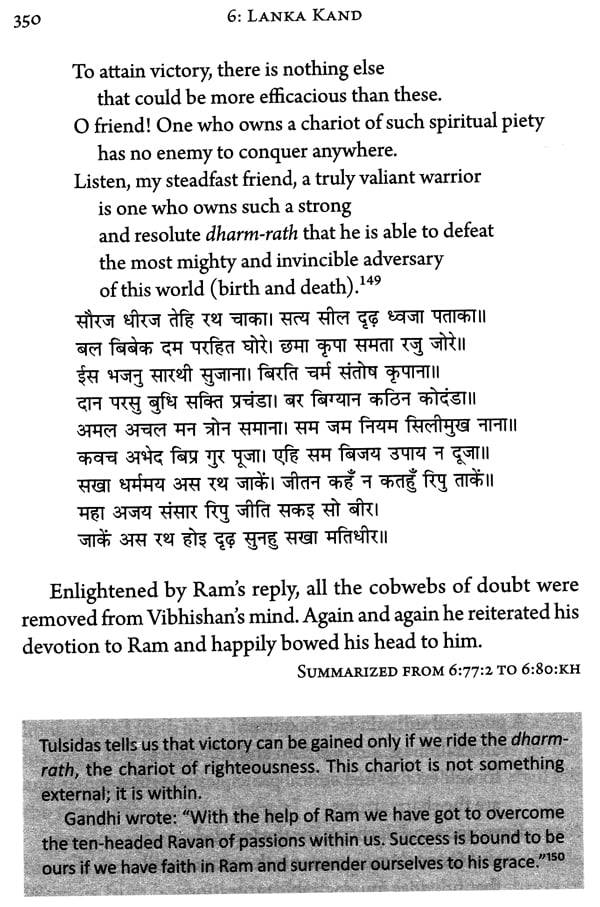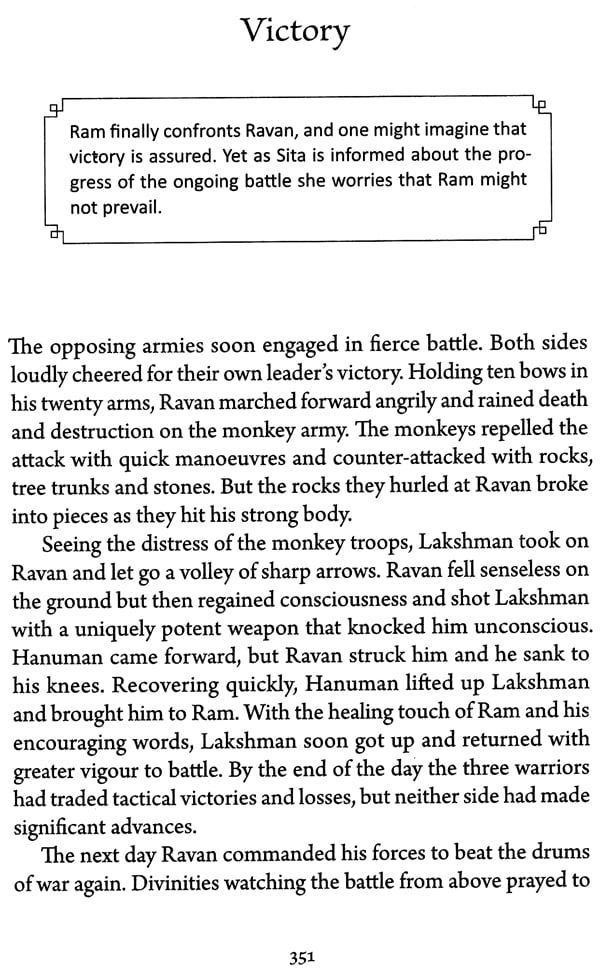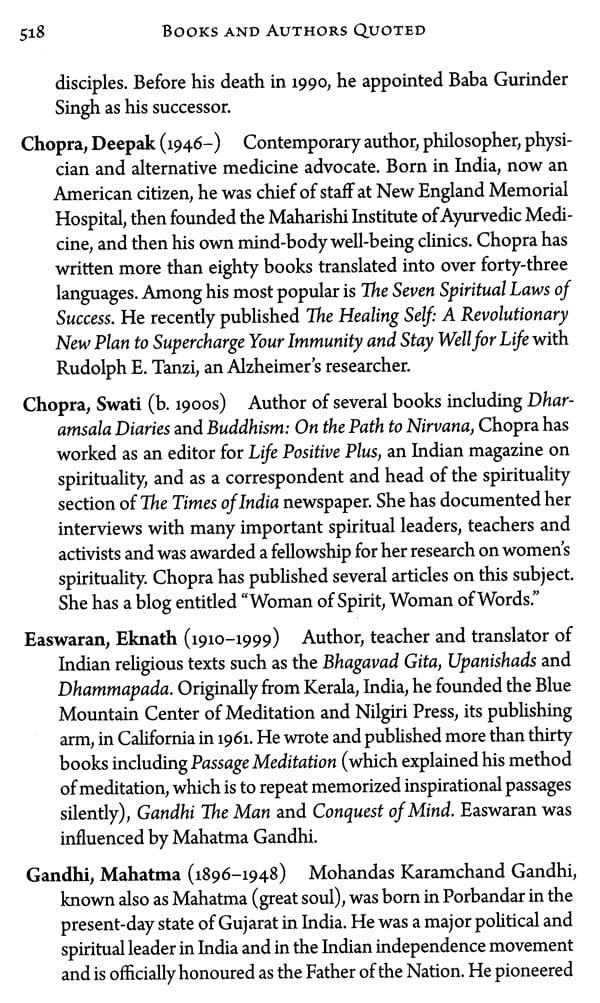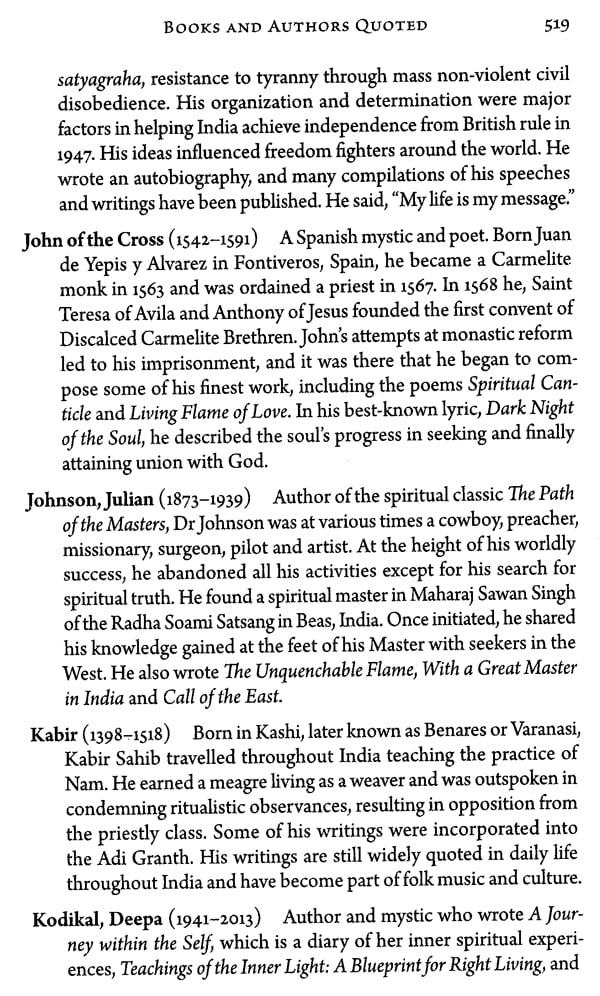
Ramcharitmanas (Love & Devotion)
Book Specification
| Item Code: | NAW437 |
| Author: | V.P. Misra and Vibha Lavania |
| Publisher: | Radha Soami Satsang Beas |
| Language: | English |
| Edition: | 2019 |
| ISBN: | 9789388733595 |
| Pages: | 548 |
| Cover: | HARDCOVER |
| Other Details | 9.00 X 6.00 inch |
| Weight | 710 gm |
Book Description
When Goswami Tulsidas wrote his Ramcharitmanas in the sixteenth century, he chose to convey his spiritual message using the story from Maharishi Valmiki’s Ramayana, an engrossing tale and one of the greatest epics of all time. It describes how the Lord took birth in human form as Ram, grew up as a prince and married Sita. The epic then recounts how Ram was exiled to the forest, where Sita was kidnapped by Ravan, and then tells of Ram’s search for Sita and battle with Ravan and his demon army to rescue her.
Since Tulsidas chose to retell the Ramayana in beautiful verse using the language of northern India at that time, his Ramcharit- manas gripped the minds of the people and remains one of the most treasured works of India.
Radha Soami Satsang Beas has already published a book on the Ramcharitmanas called The Teachings of Goswami Tulsidas by Dr K.N. Upadhyaya. This book provides a comprehensive exploration into the deep and and often hidden mystical aspects of Tulsidas’s teachings. But since Tulsidas presented his teachings through the medium of a powerful story, we decided to publish a new book that presents Tulsidas’s teachings interwoven into the tale of the Ramayana just as Tulsidas did to make his message accessible to readers today. In this new book, entitled Ramcharitmanas: Love and Devotion, the story has been summarized for ease of reading. The book presents the most significant spiritual teachings of the story as quotations given both in English and Tulsidas’s original Devanagari script.
The Ramcharitmanas is a narration by Lord Shiva in answer to a question from his wife Parvati.
The Ramcharitmanas portrays the response to this apparent contradiction. The deeds and teachings of Ram are narrated, and the unfathomable splendour of the Lord in mortal form — a being both fully human and perfectly divine — is portrayed. As different characters in the story express their confusion about who Ram really is, Tulsidas makes it clear that he is the Supreme Lord, the One "who is without attributes, indivisible, infinite, without beginning or end ... the incomparable One who is without equal’.
Tulsidas then explains that the Lord takes on a human form "for his devotees. He submits himself to their will and for their sake assumes a human form and plays many roles." As the embodiment of profound love and compassion, Ram inspires intense devotion, and the interplay of the beloved Ram and his devotees is one of the most beautiful accounts of all devotional literature.
The epic is a complex tale, so to help orient the reader as the plot unfolds, each section of this book begins with a short introduction. Boxed commentaries are also included to explain and reinforce the important spiritual messages in the work in the context of present-day experience. A section at the end of the book gives brief background information on the authors and books quoted in the commentaries.
Since there are a number of Indian terms and a wide cast of characters in the epic, a glossary has also been provided to explain the terms and give information about the characters. A subject index is also included.
Radha Soami Satsang Beas aims to support seekers of spiritual truth, regardless of their religion, ethnicity or culture. Just as this timeless epic was enlivened by Tulsidas and made relevant for the people of his time, we hope that Ramcharitmanas: Love and Devotion will inspire and enrich the understanding and devotional practice of readers today.
INTRODUCTION Goswami Tulsidas is considered one of India’s greatest poets and mystics, and his magnum opus, the Ramcharitmanas, is one of the most beloved works of Indian literature. The Ramcharitmanas relates the ancient story of Ram, a great saga of good overcoming evil, of virtue, honour and the divine romance between the Lord and his souls. In telling this tale, Tulsidas also conveys the essence of the Hindu scriptures and the teachings of the saints. Further, he uses a beautiful form of poetry, the chaupai, a four-syllabled metre that does not have an equivalent in English. The combination of the form — the melodious metred rhythm of the chaupai — and the content leads to a masterpiece of Indian literature: a riveting tale of a God-hero and an inspiring guide to the bhakti marg, the path of devotion.
The earliest known work telling the story of Ram is the Ramayana, the famous Sanskrit epic by Valmiki." In this work, Valmiki presents Ram as a noble human who is the epitome of dharma — cosmic order, religious duty and moral responsibility. In Valmiki’s version Ram is an ideal man, a great hero and warrior, who incarnates to battle evil and eliminate the menace of the demon-king Ravan. Ram is also an incarnation of Lord Vishnu,‘ but Valmiki’s focus is primarily on Ram as a perfect human being.
Ram’s story was subsequently retold by a number of authors, each in his own style and language and with different spiritual - imports. Tulsidas’s story presents Ram not only as a perfect human, a paragon of virtue, a role model and a great warrior, but also as the Supreme Being himself. Throughout the Ramcharitmanas Tulsidas reminds us that while it is easy to idolize Ram as a perfect human being, one must not forget that in fact he is the Lord himself, who is "desireless, formless and nameless". As Tulsidas explains.
Tulsidas depicts Ram playing various roles — he is an ideal son, brother, friend, disciple, husband and guide. In every role Ram upholds the high principles of dharma and morality with love,
compassion and understanding. He also undergoes the same ups and downs that human beings experience and exhibits the emo- tions of pain and joy that we feel. This is why the Ramcharitmanas has such a wide following. Indian scriptures and literature tell of other incarnations who have come to earth and battled evil. But as the classical scholar Shankarnarayana notes: "In none of them had god to share the joys and sorrows of the mortal kind.... (Ram) was pre-eminent over all the rest, for in (his incarnation) alone we meet a suffering God, who suffering man can understand."
Tulsidas broke with tradition, composing his work in Avadhi, a dialect of Hindi that was the language of the common people, rather than Sanskrit, the language of the priestly and elite classes. It was a bold move. Historically Sanskrit had been the de-facto language of Hindu religious books or interpretations of the scrip- tures. But Sanskrit was a language the common person did not understand, and it was this audience that Tulsidas wanted to reach. As S.P. Bahadur’ says: "Tulsidas brought Divinity from the august precincts of temples of learning to the simple homes of common men, presenting dharma as a way of life instead of only a theology."
Tulsidas’s life'
Who was this saint who could communicate the high and subtle teachings of the bhakti path in a way that touched the hearts and captured the imaginations of people from all levels of society, from the peasant to the pundit?
Tulsidas was born around the year 1532 CE in Rajapur in the Indian state of Uttar Pradesh. It is said that right from birth he would often repeat the name of Ram, so people began to call him ‘Rambola’ (an utterer of the word Ram). When he found his guru (believed to be Narhari Das), his guru changed his name from Rambola to Tulsidas.
His guru was a disciple of Swami Anantananda, who was a disciple of Swami Ramananda. Among Ramanandas prominent dis- ciples and their subsequent successors were Anantananda, Narhari, Kabir, Ravidas, Pipa, Mirabai and others. Thus Tulsidas stands among these great poet-saints who gave such exquisite expression to the way of bhakti in the generations after Ramananda.
Tulsidas frequently heard the enchanting story of Ram at his guru's feet and developed a deep understanding of its underlying spiritual essence. It is thought that he lived with his guru for about fifteen years, deeply immersed in learning the scriptures, various systems of philosophy and the practice of bhakti.
